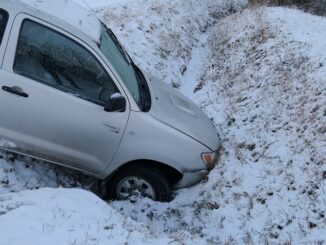
Understanding Collision Reporting Centres (CRCs):
Experiencing a car accident, even a minor one, can be stressful. In Ontario, Collision Reporting Centres (CRCs) offer a streamlined process for reporting accidents without involving the police directly. This guide will delve into what CRCs are, when you can utilize them, and how they simplify the reporting process for minor collisions.
What are Collision Reporting Centres?
CRCs are facilities established in partnership with police services and private companies across Ontario. They provide a convenient alternative for drivers involved in minor accidents to report the incident and obtain an official police report. These centers are equipped with staff trained to document accidents and assist drivers in completing the necessary paperwork.
When Can You Use a CRC?
You can use a CRC if your accident meets the following criteria:
- No serious injuries: There are no significant injuries to anyone involved in the accident.
- Drivable vehicles: All vehicles involved in the accident are still drivable.
- Minor damage: The total estimated damage to all vehicles is less than $2,000.
- Agreement: All drivers involved agree to report the accident at a CRC.
Benefits of Using a CRC:
Utilizing a CRC offers several advantages:
- Faster reporting: CRCs often have shorter wait times compared to reporting accidents directly to the police.
- Convenience: These centers are located throughout Ontario, making them easily accessible.
- Simplified process: CRC staff are trained to guide you through the reporting process, ensuring all necessary information is captured accurately.
- Reduced burden on police: CRCs free up police resources to focus on more serious incidents.
How to Use a CRC:
- Gather information: Collect the following information before visiting a CRC:
- Driver’s license information for all drivers involved.
- Insurance information for all vehicles involved.
- Vehicle registration for all vehicles involved.
- Contact information for any witnesses.
- Locate a CRC: Find the nearest CRC to the accident scene. You can search online or use a mobile app to locate a center.
- Report the accident: Visit the CRC within 24 hours of the accident. Provide all necessary information and documentation to the CRC staff.
- Obtain a report: The CRC will file a police report on your behalf and provide you with a copy.
Important Considerations:
- You must report the accident to a CRC within 24 hours.
- You cannot use a CRC if there are serious injuries, significant damage, or if the vehicles are not drivable.
- Some insurance companies may require you to report accidents directly to them, even if you use a CRC.
Conclusion:
Collision Reporting Centres in Ontario provide a valuable resource for drivers involved in minor accidents. They streamline the reporting process, offer convenience, and reduce the burden on police services. By understanding when and how to use a CRC, you can ensure that your accident is reported accurately and efficiently, allowing you to move forward with resolving the incident and getting back on the road.



